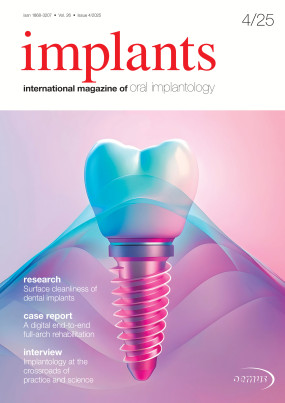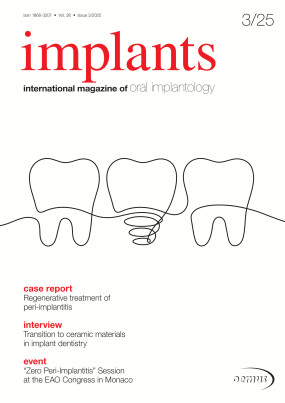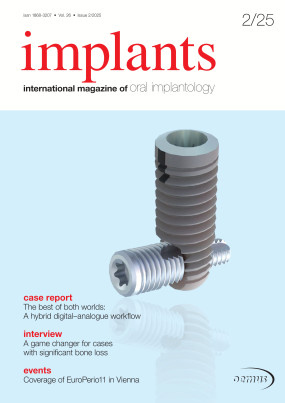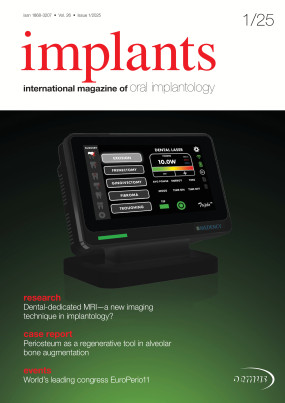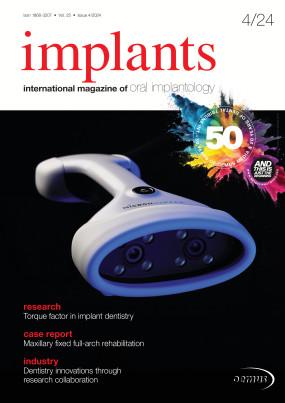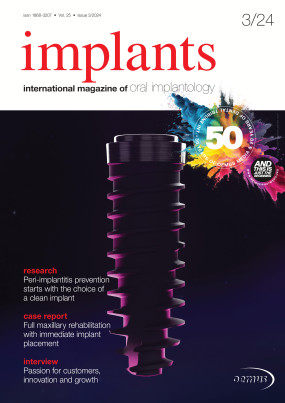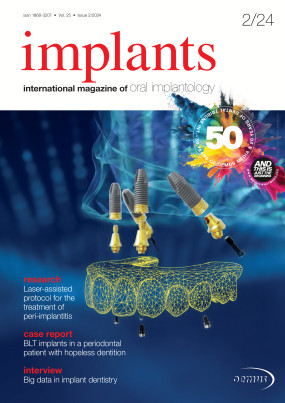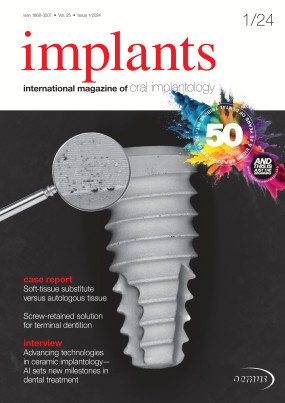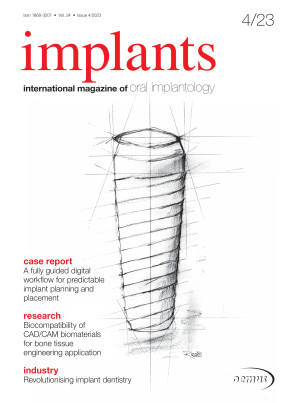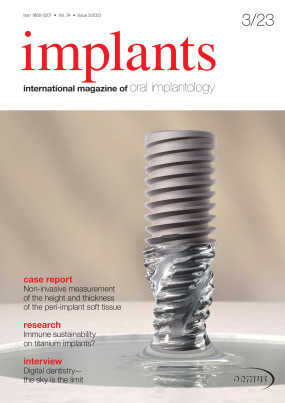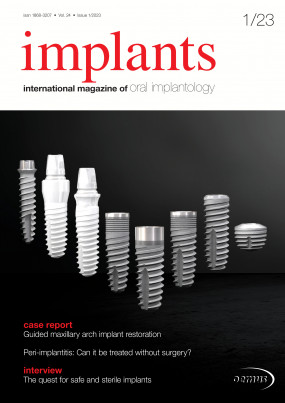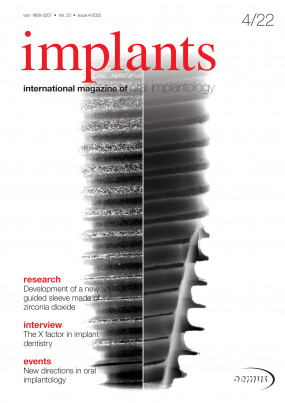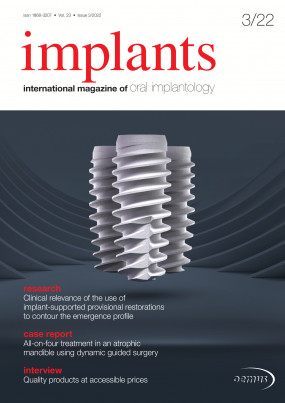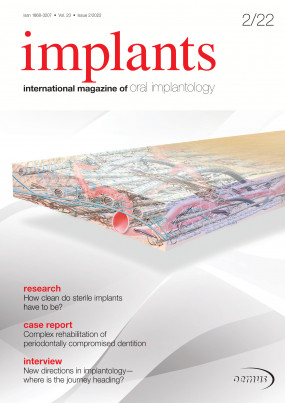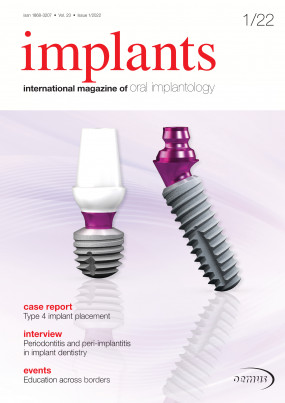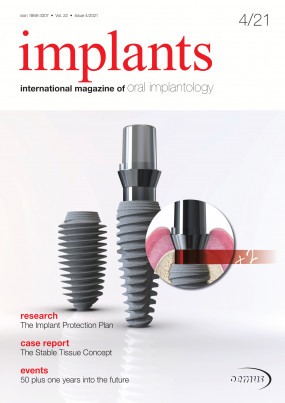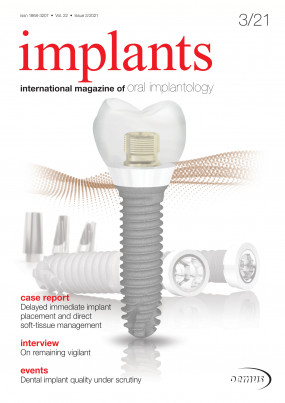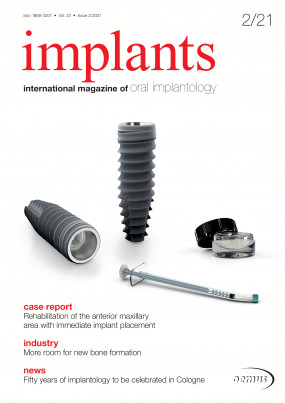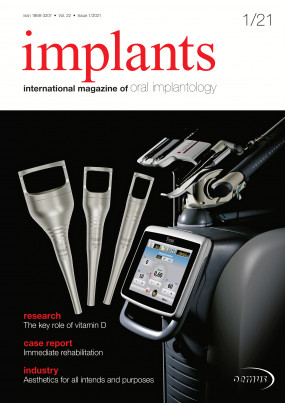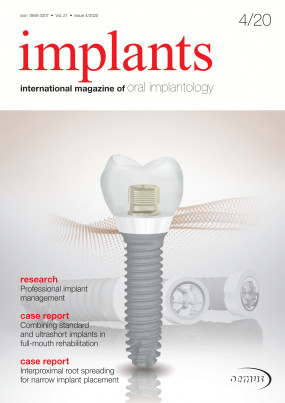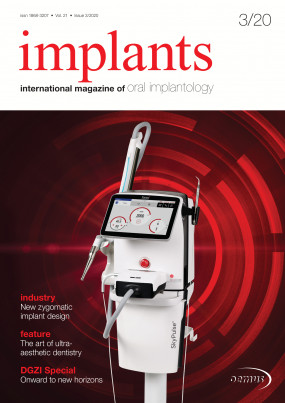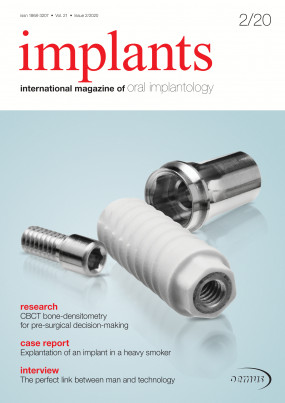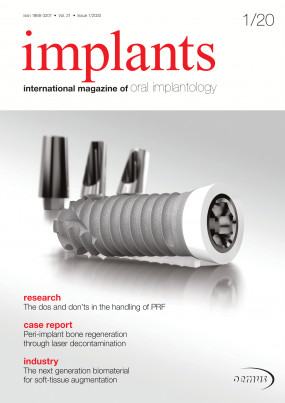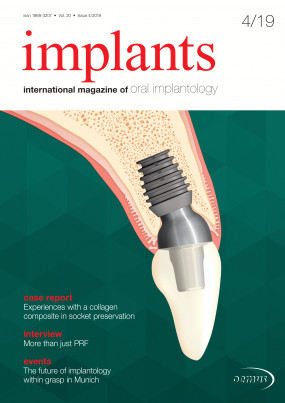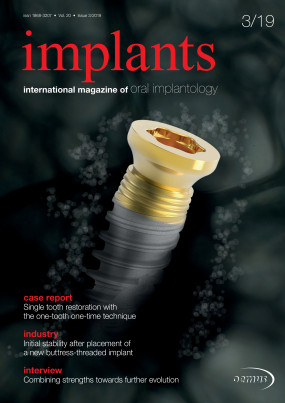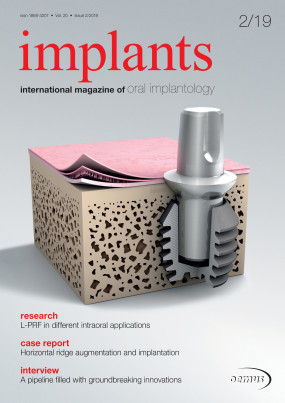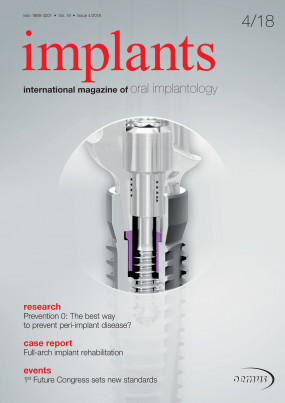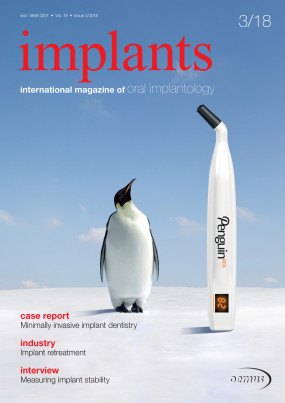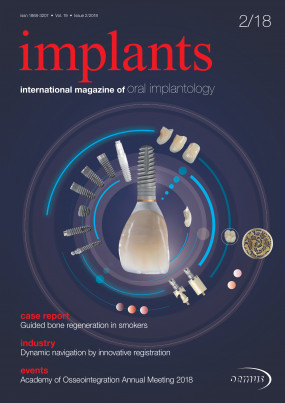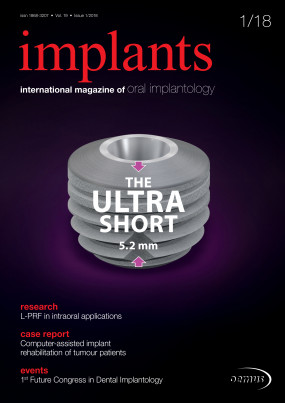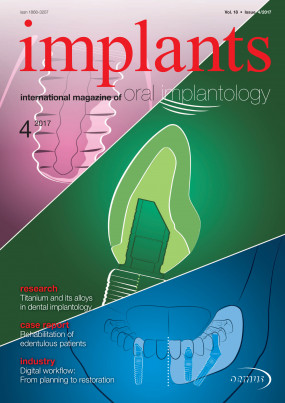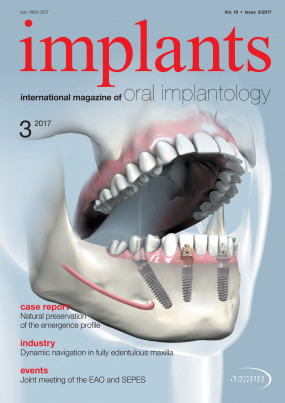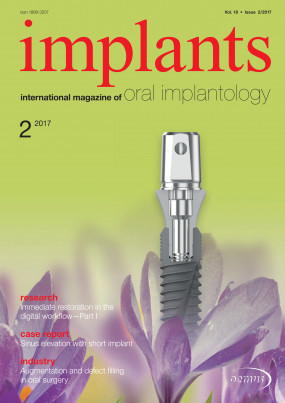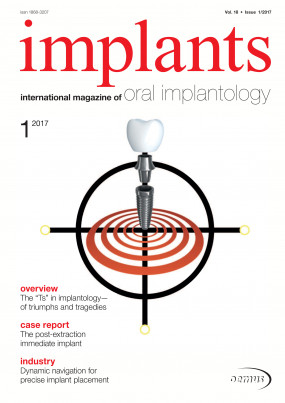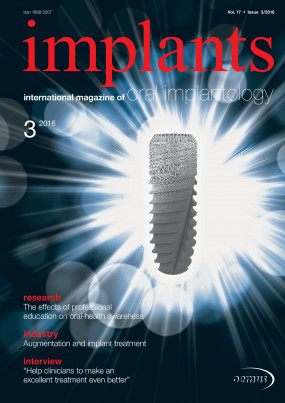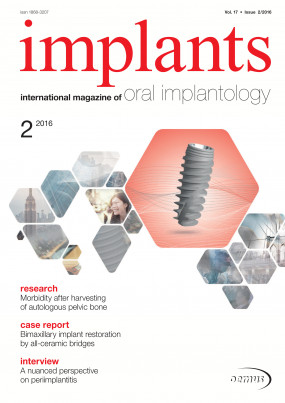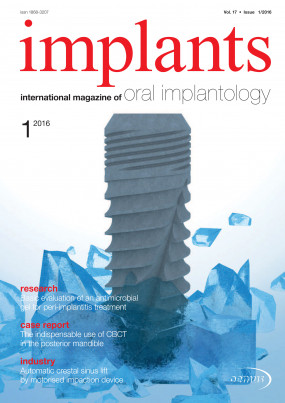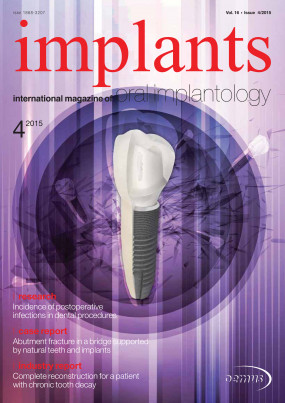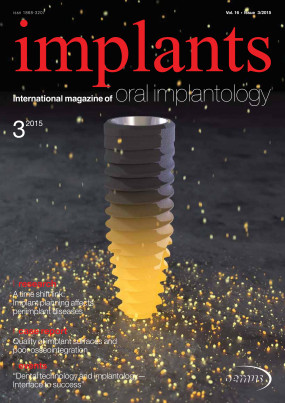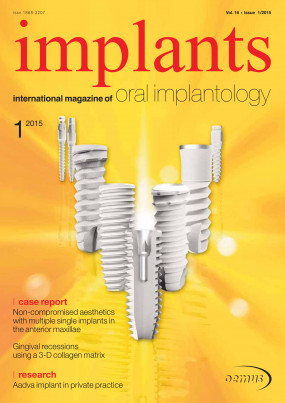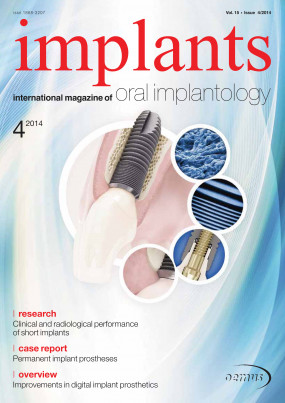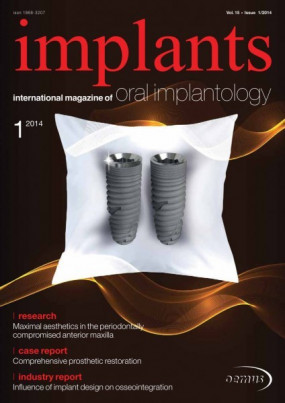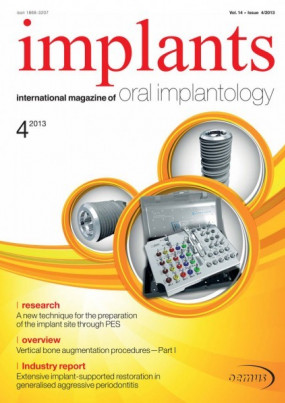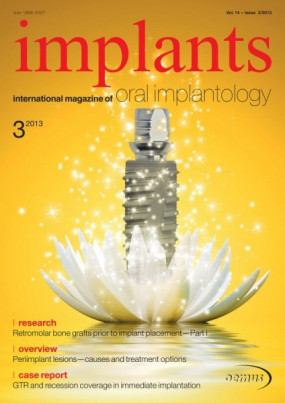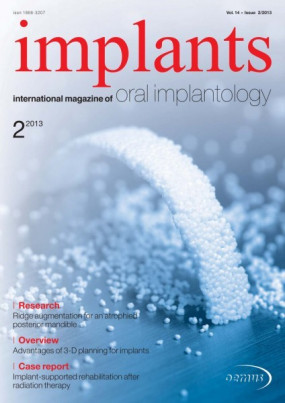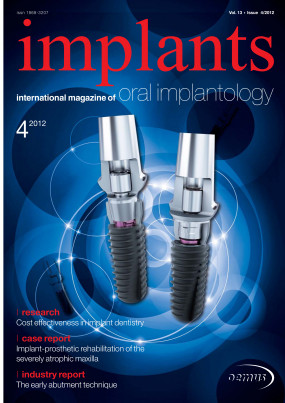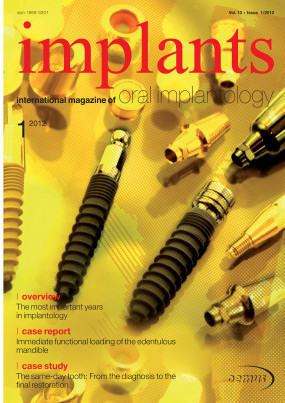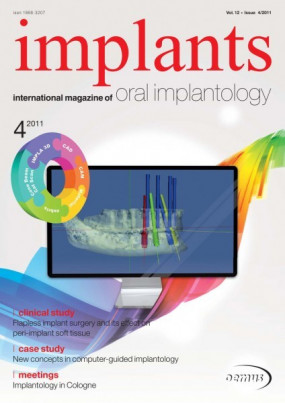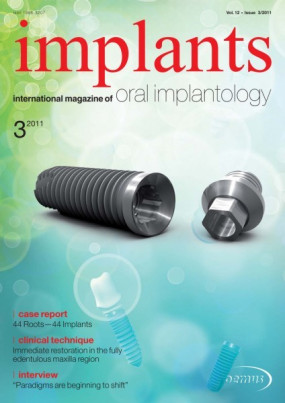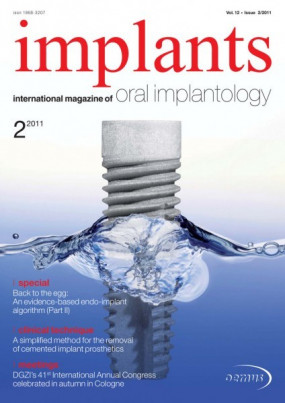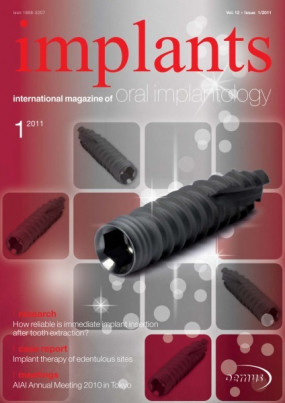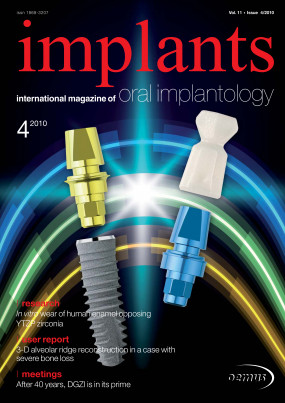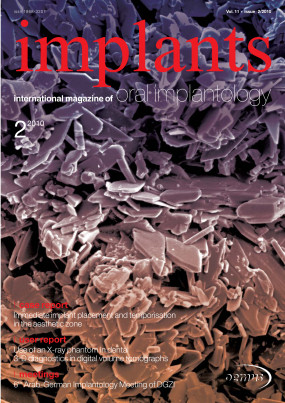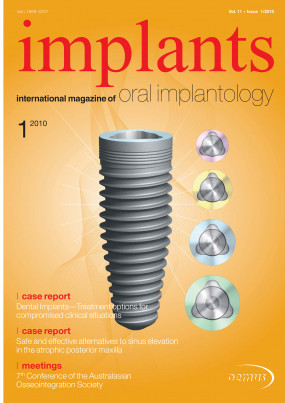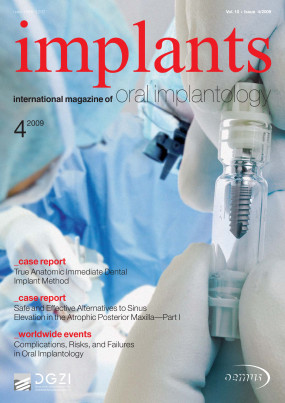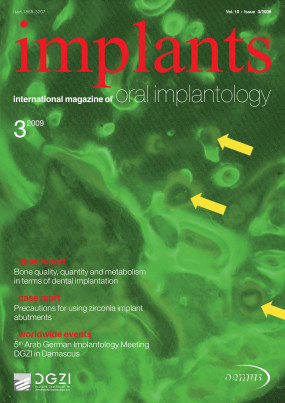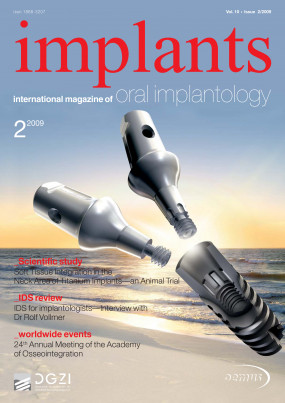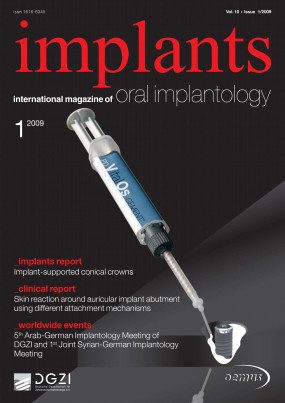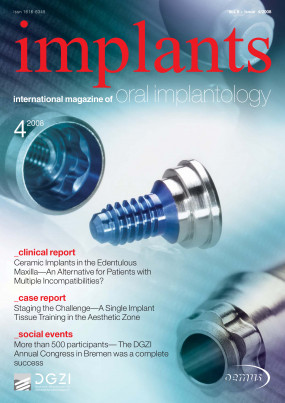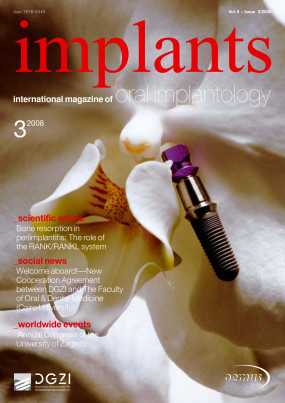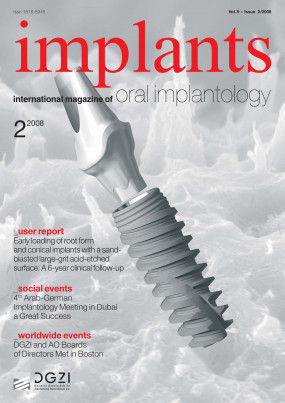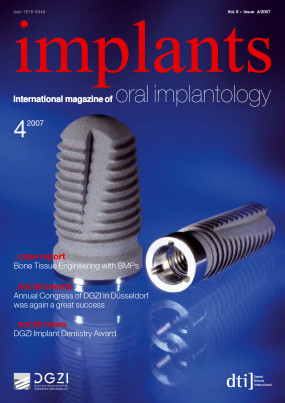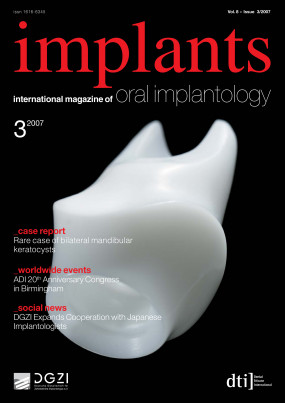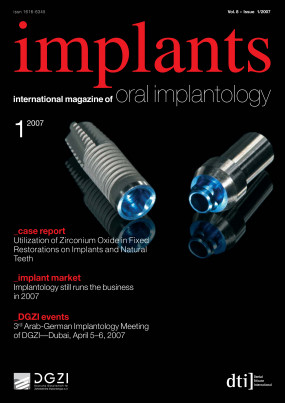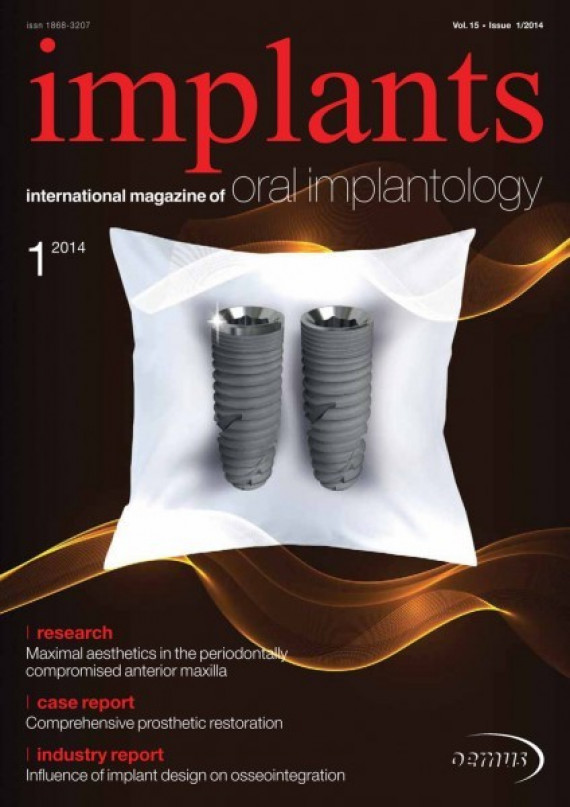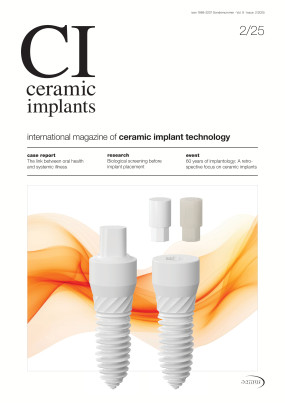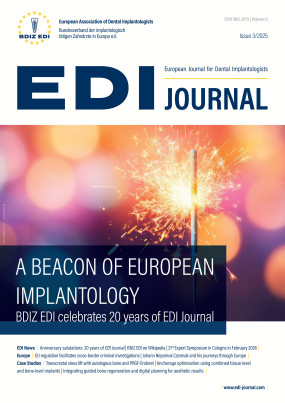Inhaltsverzeichnis
3
“The frequency with which scientists fabricate and falsify data, or commit other forms of scientific misconduct is a matter of controversy. Many surveys have asked scientists directly whether they have committed or know of a colleague who [has] committed research misconduct, but their results appeared difficult to compare and synthesize.” ...
6
Maximal aesthetics in the periodontally compromised anterior maxilla - Immediate implantation
Dr Nikolaos Papagiannoulis, Dr Eduard Sandberg & Dr Marius Steigmann, Germany
In addition to habits, systemic diseases and bruxism, periodontal diseases are challenging problems in oral implantology. Here, surgeons have to deal with tooth loss, prolonged epithelia, bone resorption and loss of periodontal ligament. In the following case, we could clearly see at the preclinical analysis that major bone resorption had occurred horizontally as well as vertically. The bony defects referred to more than one wall, the bone resorption around the root was like a crater, infiltrated with soft tissue. Primary stability was difficult to achieve for the implant...
10
Ridge augmentation for an atrophied posterior mandible using NanoBone block: Treatment outcome of complications (Part 1)
Dr Omar Soliman & Prof. Dr Dr Mohamed Nassar, Egypt
Reconstruction of the posterior mandible is challenging because the deformity involves deficiencies in both bone and mucosa,1 and unlike the maxillary sinuses, the alveolar ridge does not provide a natural cavity to contain particulate grafting material.2 Therefore, the graft must have sufficient strength and rigidity to be fixated at the recipient site. It must also be three-dimensionally stable to withstand muscular forces.3 Constraints in autogenous bone block graft availability from intra-oral sites often limit treatment possibilities.4 Among the possible alternatives to autogenous bone block grafting is the use of synthetic NanoBone block (ARTOSS GmbH). This article will discuss the potential complications during atrophied posterior mandible augmentation using NanoBone block, practically focusing on outcome of complications treatment (Figs. 1&2)...
16
20
A cavity is a hole in a tooth, whereas a cavitation is a hole in bone. Unlike most tooth cavities, bone cavitations cannot be detected by simply looking at the bone, rather they must be determined radiographically and the interpretation thereof requires an expert eye, consequently many cavitations are missed...
24
Immediate implantation and full-ceramic restoration in the maxillary anterior region
Dr Arndt Happe & Andreas Nolte, Germany
Implant-supported single-tooth crowns in the aesthetic zone are a special challenge, particularly when immediate implantation is planned—if there is insufficient bone volume and a thin biotype. A whole chain of critical factors need to be considered here, including implant positioning,1, 2 hard- and soft-tissue management 3–5 and the natural design of the crown.6 These days, a number of digital methods are available to simplify the process and make it safer. 7 Depending on the initial situation, that is maximum aesthetic demands, however, many dentists prefer analogue methods, as in the following example...
32
Influence of implant design on osseointegration
Dr R. Fromental, Dr S. Langonnet, S. Chesnay, Prof. J.C. Béra, Dr B. Lavandier, Dr A. Gleizal, Dr M. Paris, Dr R. Gourmet & Prof. M. Rivoire, France
Nowadays, numerous studies attempt to show the importance of implant surface treatment1 for accelerating the osseointegration process.2 Surface finishing, notably roughness generation, has allowed to increase the ability of titanium to link directly to bone without any intermediary fibrous tissue.3 ...
40
By the end of last year, BEGO Implant Systems GmbH & Co. KG introduced their long-awaited new implant system. With regard to the—especially in Germany—highly competitive implant market, where numerous providers of implantological products compete with each other for the same target group, innovations are of particular importance...
42
Short implants - An interview with Prof. Dr Christoph Hämmerle, Switzerland
Interview with Prof. Dr Christoph Hämmerle
Looking at the recent publications in implant dentistry, we see an increased interest in short implants. What can be considered a short implant and what do you think is driving the professional interest in these implants?
44
International implantology in Berlin - Japanese lecturers at the DGZI Annual Congress 2013
Redaktion
International speakers impressed the audience with their scientific knowledge on the international podium on the first day of the congress, among them Dr Keiichi Naruse, Dr Shohei Ikeda and Yoshishige Taniguchi from Japan. The following excerpts provide a summary of their enlightening speeches...
46
International Society of Oral Implantology (ISOI) President Dr Naotaka Sugiyama, Vice-President Dr Yamawaki, Conference President Dr Tomohiro Ezaki, and Prof. Shoji Hayashi from the Kanagawa Dental College in Yokohama hosted a superb conference in Tokyo in Japan on 16 and 17 November 2013. In his opening speech, Sugiyama highlighted the importance of collaboration with the German Association of Dental Implantology (DGZI) and of scientific exchange between the two partner associations for the Japanese members, who hold German dentistry standards in high regard, especially in the field of oral implantology. The ISOI, which has more than 1,000 members, established the DGZI Japan Section in 2007...
